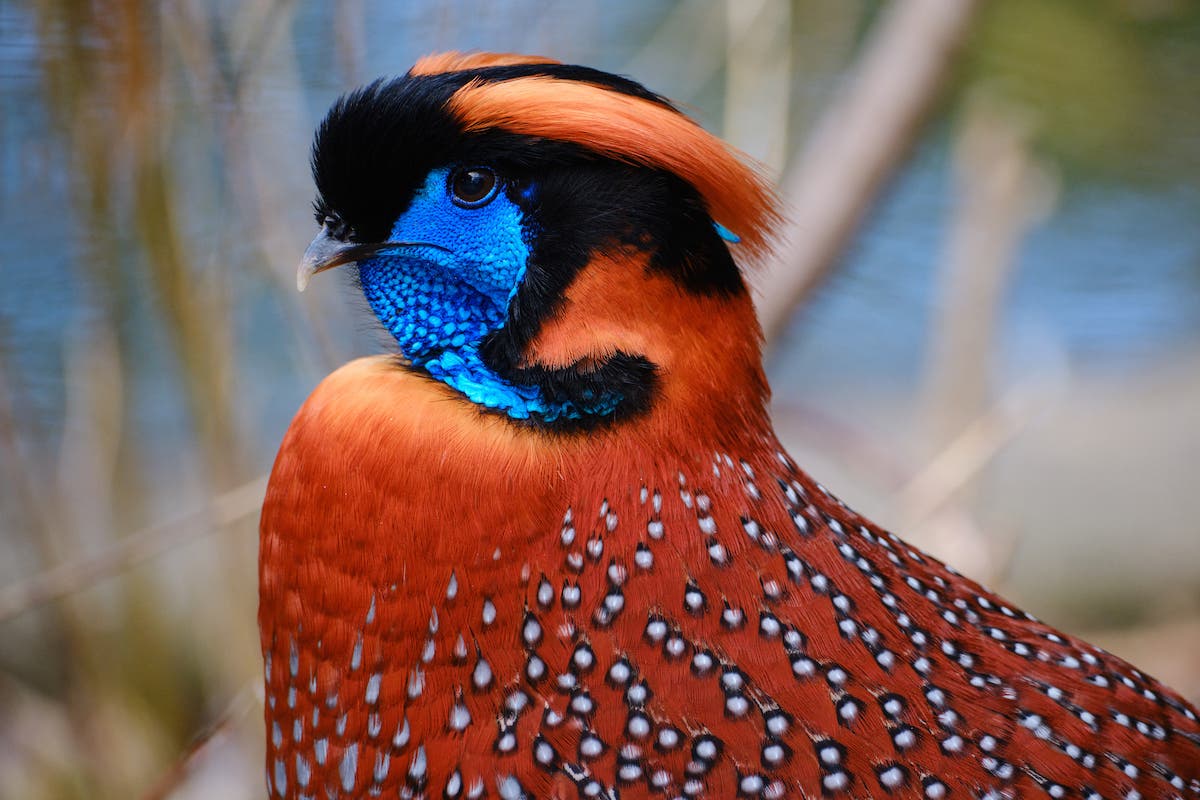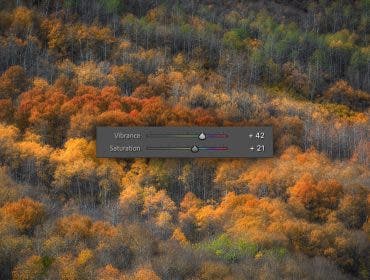The Fujifilm XF 70-300mm f/4-5.6 R LM OIS WR Lens is an essential lens in my photography toolkit. I always take it with me when heading out for a day of shooting, because it has a full frame equivalent focal range of 107-457mm. This gives me the ability to shoot everything from macro photography, to landscape photography, wildlife, and even portraits. It allows me to create a variety of different images, while being lightweight and easy to travel with. Let’s take a look at some of the useful features that make the Fujifilm XF 70-300mm one of my favorite telephoto zoom lenses.
Key Features:
- 17 elements in 12 groups (one aspherical and two ED elements)
- 107-457mm focal range in full frame equivalent
- 9 rounded diaphragm aperture blades for smooth bokeh
- Weighs only 580 grams
- Dust and moisture resistant design can be used in temperatures as low as -10 degrees Celsius
- Compatible with 4X TC WR and XF2X TC WR teleconverters
- Ultra-fast linear motor with near silent operation and precision focusing
- Optical Image Stabilization (OIS) system that provides up to 5.5 stops of shake correction
- Close focusing distance of 32.7in with a maximum magnification of 0.33x (Telephoto)
- Measures just 5.2in long

Why I Love the Fujifilm 70-300mm Lens
Size and Weight
Size and weight are two important characteristics of the Fujifilm 70-300mm lens for me. I typically favor carrying lightweight gear setups when heading out to shoot. This lens is absolutely featherweight, especially if you compare it to full frame telephoto zoom lenses that can offer a similar focal range. Having a small telephoto zoom allows me to enjoy the experience of shooting — without having to carry a heavy backpack. Weighing in at a mere 580 grams, the Fujifilm XF 70-300mm is ultra-light and very compact. Although, it still gives me a full frame equivalent focal range of 107-457mm.

Close Focusing
Close-focus distance and magnification are two additional reasons why I love the XF 70-300mm. I’m always looking for ways to optimize my gear bag by streamlining the number of lenses that I carry when heading out to shoot. The close-focus capabilities of this lens allow me to leave my macro lens at home. And I can still create beautiful detailed images at the telephoto end of the focal range.
I can get a magnification of 0.33x at 32.7 inches when shooting close to my subjects at 300mm. That allows me to get some amazing closeup detail in my images. This means I can enjoy the weight savings in my backpack.

Rugged Design
I’m truly impressed by the overall quality it delivers — both in its build and its optics. Living in the PNW requires the use of robust gear that can withstand the elements. For most of the year in Seattle, we’re subjected to moisture and colder temperatures. Pairing the XF 70-300mm with the weather-sealed body of my Fujifilm XT-5 gives me the peace of mind to shoot in any environment without worrying about damaging my gear.
With 17 optical elements in 12 groups, and nine rounded diaphragm aperture blades, the XF 70-300mm delivers tack-sharp images with beautifully rendered bokeh. Its super-fast linear motors are an ideal pairing with its amazingly sharp optics. They work together to accurately attain focus and, subsequently, render razor sharp images.
Value and Full Frame Equivalence
The Fujifilm XF 70-300mm f/4-5.6 R LM OIS WR is a versatile lens that I use in a number of different scenarios. I’ve been able to capture amazing macro photography, compressed landscape photography, bird and wildlife photography, and even some portraiture.

It provides tremendous value given its lightweight build, amazing optical quality, weather resistance, linear focus motors, close-focus capability, and highly useful focal range. Given the multitude of benefits that it offers, the fact that it’s reasonably priced make it an exceptional value and a highly recommended lens that’s always in my bag.
With a full frame equivalent focal range of 107-457mm, the XF 70-300mm is an ideal lens to take on your everyday adventures. It’s an excellent choice as an all-around telephoto zoom lens for travel. It gets an even more useful range of focal lengths when combined with Fujifilm’s excellent and weather resistant 1.4 and 2x teleconverters.
Who Should Have the Fujifilm 70-300mm Lens?
This lens would be an ideal choice for photographers that shoot landscapes, nature, and wildlife.
Landscape Photographers
There’s something unique about capturing landscape photos with telephoto lenses versus using traditional ultra-wide focal lengths. The main reason for this is that longer telephoto zoom lenses — like the XF 70-300 — create a thing called lens compression. This is essentially when the various elements in an image appear closer together, or “compressed.” It gives landscape photographers the ability to really accentuate patterns, textures, and generally bring their subjects closer together in the frame. I personally love the look it creates. I find compressed telephoto landscape photography much more enjoyable than shooting with an ultra-wide zoom or prime lens. The XF 70-300mm is an amazing lens for landscape photography, and it’s made even better by its compact size and lightweight design.

Nature/Wildlife Photographers
Nature and wildlife photographers will find the XF 70-300mm to be a wonderful option as well. It’s built to withstand dust, moisture, and extreme temperatures. It’s also compatible with Fuji’s 1.4 and 2x teleconverters. This makes it an even more versatile telephoto lens for reaching distant subjects.

In addition to its weather sealed design, the XF 70-300 includes OIS, or Optical Image Stabilization. OIS is a crucial feature for telephoto zoom lenses like this. It enables the ability to capture sharp images at longer focal lengths, without the need to use tripods or monopods. Nature photographers can venture on their shoots without carrying a heavy gimbal. This is thanks to OIS and lightweight build of the lens.

The benefits of the lens for wildlife photography are enhanced with the inclusion of its linear motors, which provide lightning fast autofocus for tracking elusive animals and capturing sharp images. Taken all-together, the result is a rugged and compact lens that is ideal for nature and wildlife photographers. It can be used in any weather, has robust stabilization, and focuses fast enough to track erratic subjects.
Comparable Lenses from Fujifilm
There are two telephoto zoom lenses from Fujifilm that provide similar focal lengths and features:
The Fujifilm XF 55-200mm f/3.5-4.8 R LM OIS is an alternative option that offers many of the same benefits as the XF 70-300mm. It features linear motors, has Optical Image Stabilization, and even weighs the same 580 grams. Where it differs is in its larger light gathering ability, with an aperture range of f3.5 to f4.8. It also starts a bit wider at 55mm, and ends a bit shorter at 200mm. Unlike the XF 70-300mm, its not weather resistant and is not compatible with the Fujifilm 1.4 and 2x teleconverters.
The Fujifilm XF100-400mmF4.5-5.6 R LM OIS WR is another alternative to the XF 70-300mm, with some notable similarities and differences. It features a similar focal range of 100-400mm, is compatible with Fuji’s 1.4 and 2x teleconverters, features weather resistance, and linear motors. However, it’s significantly larger and heavier at 1375 grams, which is nearly 3x the weight of the XF 70-300mm. With this bulkier design, you are getting a construction of 21 elements in 14 groups, and includes five ED lenses and one Super ED lens to help reduce chromatic aberration — a more advanced version of 70-300mm.
Conclusion
There are certain lenses that I find essential for my photography toolkit — the Fujifilm XF 70-300mm f/4-5.6 R LM OIS WR being one of them. The diverse range of images that I can create with just this one lens allows me to differentiate my work. Before, I would carry several specialized lenses that needed to be constantly swapped out, added weight to my bag, or created missed opportunities. Now, I can take advantage of an all-in-one solution that allows me to quickly create different images, ranging from landscapes, macro, nature, and wildlife.
This is a high-quality option that is affordable, lightweight, compact, sharp, and built with useful features that empower your creativity — no matter if you’ve left your tripod at home or are shooting in harsh environmental conditions. Fujifilm has done an excellent job with this lens, giving us a tool that can be used for a wide range of applications while delivering stellar results.






